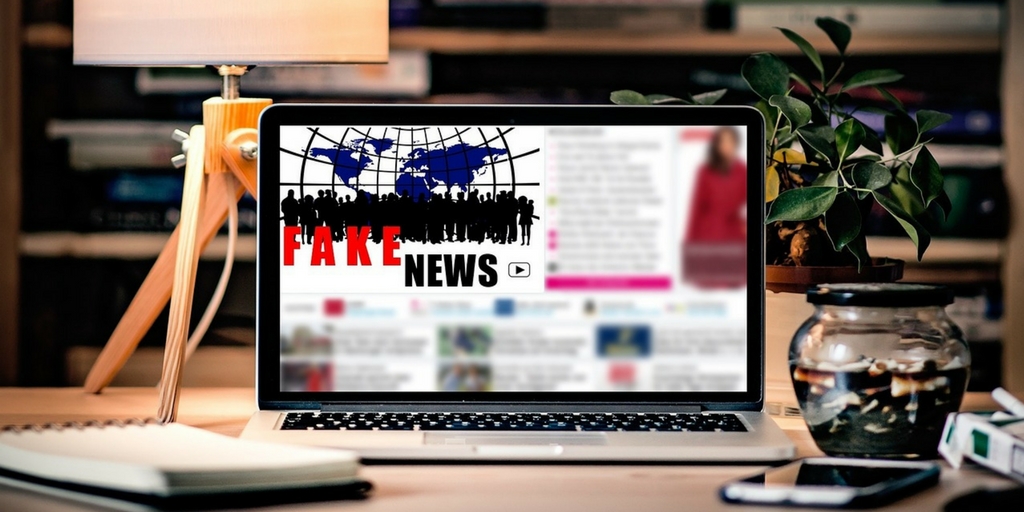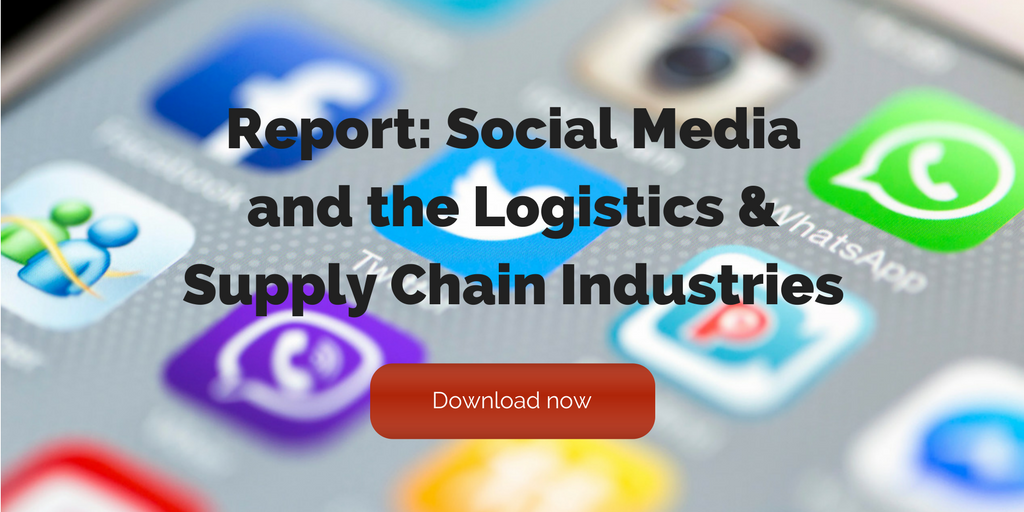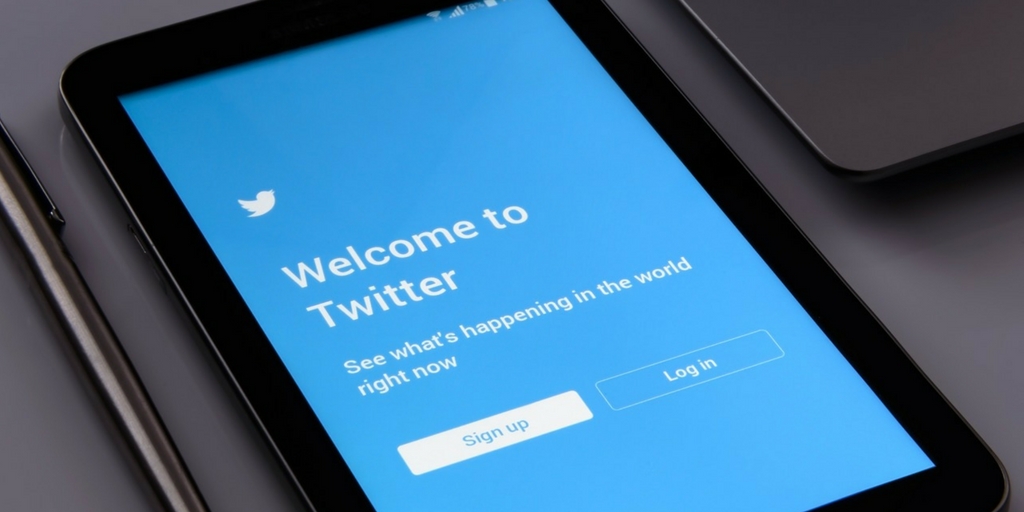
by Fronetics | May 25, 2017 | Blog, Content Marketing, Marketing, Social Media
In this month’s social media news, Facebook cracks down on misleading content, while Snapchat and Pinterest appeal to advertisers.
If you sense that the competition between social media networks for users and advertisers is heating up, you’re not alone. This month, Facebook continues its quest to cut down on the sharing of false information and misleading content while launching better lead-tracking tools for ads. Twitter moves to protect user privacy by updating its terms and conditions. And exciting new technology launches at Google, Pinterest, and Snapchat.
Here’s the latest social media news for the supply chain.
Facebook reduces links to low-quality web pages and misleading ads
After months refining its News Feed algorithm and ads, Facebook announced another update to weed out false information and spam in a blog post: “We reviewed hundreds of thousands of web pages linked from Facebook to identify those that contain little substantive content and have a large number of disruptive, shocking or malicious ads. We then used artificial intelligence to understand whether new web pages shared on Facebook have similar characteristics. So if we determine a post might link to these types of low-quality web pages, it may show up lower in people’s feeds and may not be eligible to be an ad. This way people can see fewer misleading posts and more informative posts.”
As changes roll out gradually in the coming months, publishers with high-quality landing page experiences might notice an increase in traffic, while those with negative experiences will see a decline. Businesses looking to improve their web experiences can read the full Facebook Business post and visit the Help Center for tips.
See also:
Twitter updates opt-out process
Twitter is helping users weed out irrelevant personalized ads and protect their privacy. The Twitter website tag will now “rely on the Digital Advertising Alliance’s consumer choice tool and other ways to opt-out described here.” Site owners must update the privacy policy to notify their users of this new opt-out process.
Google unveils Google Lens
Google’s latest product, Google Lens, will leverage computer vision and AI technology to enable smartphone cameras to not only see, but to understand what it’s seeing to help users. For example, if you take a photo of the login information on the sticker on your router, the lens will identify the action by offering to connect you to the Wi-Fi, using the photo of the network name and password.
Snapchat reaches 166 million daily active users, rolls out limitless snaps, adds ad lenses and geofilters
In its first quarterly earnings report since going public in March, Snap Inc. announced that its daily active user (DAUs) base grew to 166 million in Q1 2017. Additionally, the Snapchat app released four new creative tools:
- Infinity timer setting: This option eliminates the 10-second time limit and allows your videos to play as long as you like. The snap then erases when closed.
- Looping: Users can choose to have their photos or videos loop indefinitely until viewers close the snap.
- Magic eraser: Users can select and remove objects from snaps.
- Emoji drawings: Users can now draw with emojis using the pen tool.
Ad partners also have three new creative tools at their disposal:
- World Lenses are an extension on Snapchat’s Sponsored Lens, which already let advertisers turn users’ selfies into ads. Sponsored World Lenses allow advertisers to create content for the rest of the photo beyond the face, like floating 2-D or 3-D objects.
- Audience Lenses let advertisers buy a guaranteed number of Lens impressions for a specific audience. This includes those that are targeted by demographics like age and gender, as well as those identified as falling in one of Snapchat’s Lifestyle categories.
- Smart Geofilters automatically add location information or other real-time information to a nationwide or chain Geofilter. This ad type allows users to activate branded overlays that appear when they swipe left or right on the camera.
Pinterest applies visual search technology to ads
Pinterest announced that it’s now leveraging the technology behind its newly released visual discovery tools — Shop the Look, Instant Ideas and Lens beta — to make Promoted Pins even more effective. Machine learning allows the platform to identify what is most relevant to a user based on the images s/he pins. For example, if the user pins images of blue, formal, A-line dresses, Pinterest will begin to show similar images in that user’s feed. The same technology will now be applied to ad content. “We help people find your ads in the very same way, connecting people to products they like the looks of, but don’t quite have the vocabulary to describe. As a result, your ads feel more relevant, and they can reach audiences you may not have considered before.”
Not sure how to use Pinterest’s advertising tools? Check out these 4 free webinars for businesses.
Facebook enables targeting to users who have saved posts, adds offline conversion solution for lead ads
Facebook page admins can now see the number of saves for each page post, then “create custom audiences of people who have saved [their] posts and retarget them with different content.”
Additionally, Facebook is now allowing businesses to connect their CRM, point of sale, or even their call-center systems to their Facebook ad campaigns to help advertisers monitor which of their lead ads drive those business results. This is huge for advertisers who have been trying to attribute conversions from lead ads based on offline activity.
Ellen, Ludacris, Katy Perry and more to star on YouTube’s exclusive new shows
YouTube announced plans to launch seven new “star-studded” shows, exclusively premiering on the video platform “beginning later this year.” Stars include Kevin Hart, Rhett and Link, Ellen DeGeneres, Katy Perry, the Slow Mo Guys, Demi Lovato, and Ludacris. The shows will be fully ad-supported and thus free to watch.
Facebook releases “Latest Conversations” feature
Facebook’s new Latest Conversations feature shows timely topics that many members across the network are discussing in its search results. It appears in its own section of the search results and includes a running count of how many people are talking about the topic at the moment. This feature is currently only available on the mobile app.
Related posts:


by Fronetics | May 23, 2017 | Blog, Marketing, Social Media
If you’re a large company not using social media for all that it’s worth, you’re missing out on customers and business.
We know that the majority of businesses participate in social media — in fact, a dominant 88% of B2B marketers report using these platforms as part of their marketing programs. Large corporations, small businesses, and those in between are promoting their brands and engaging with customers online. Even companies within the logistics and supply chain industries are reaping the benefits of social media marketing.
The truth is, if your company is not participating in social media, you are at a disadvantage. Your customers, your employees, and your competitors are taking advantage of these technologies to conduct business in new, more efficient ways.
Content Marketing Institute’s new report on B2B enterprise companies (companies with over 1,000 employees) shows that large corporations are also jumping on the social media bandwagon. Here are some stats:
- 87% of B2B enterprise companies use LinkedIn
- 81% use Twitter
- 77% use YouTube
- 74% use Facebook
But when asked about the importance each of these channels to their organization’s content marketing success, 87% felt that email is still the most effective tool for distributing content.
What does that say to you? These enterprises are using social media for content distribution, but their heads aren’t in the social media game.
So, why should their social media efforts be turned up?
Let the numbers speak for themselves:
Businesses are using social media, so if your B2B enterprise company isn’t, you’re already behind the eight ball. Social media is a great way to distribute information to a vast audience in a quick, cost-effective manner.
Social media also allows you to get to know your audience in a more personal way. After a few weeks and months of committing to your content marketing strategy on social media platforms, you’ll know what your target audience likes and what they’re interested in. The more time and effort put into your social media campaign, the more refined and effective it will become.
And we can’t ignore that your competitors are already out there, happily exploring the online market share.
Social media platforms have already proven their worth and most companies, big and small, have embraced their value. If your enterprise company hasn’t, it’s time to get your foot in the game.
Related posts:


by Fronetics | May 4, 2017 | Blog, Marketing, Social Media
Show that your company cares about its customers by responding in a complete and timely manner to negative comments on social media.
I was recently talking with a client who works in a sector known for negative online reviews. Customers tend to air their grievances in public forums — especially on social media — as a means of resolving issues that could be handled offline with a quick phone call to customer service. Some are just looking for discounts and know that a thorough online bashing will usually do the trick. Either way, the client did not see the point of engaging in an unwinnable argument.
I totally get it. But, unfortunately, not a good idea.
It’s really important to respond to negative comments for many reasons. Let’s walk through a few.
You are not a robot.
More and more, people turn to social media and other online forums to complain. It’s so easy to do! You don’t even have to face the consequences — or a real live person!
Don’t give them that satisfaction. Or, maybe I should say, prove them wrong. Give a voice to your business. Show them that someone is listening, that an actual human is reading their words. They’re not just complaining in a vacuum.
An always-respond policy will discourage commenters who don’t have a real issue that needs solving. Of course, it won’t stop people looking for a fight, but at least it shows that you’re not a robot, and that they should think twice before bashing you for all the world to see.
That brings up another critical point.
Everyone’s watching.
When you don’t respond to negative comments on social media, all of your followers and all of the people that come across your page see that. They get only one side of the story — and it ain’t pretty. They see that you didn’t care enough/have the time/[insert other bad assumption here] to respond to customer concerns. Imagine how that reflects on your business.
But when you do take the time to respond to comments, people see that, too. They see you making an effort to improve your customers’ experiences. Even if they have no context for the complaint, they have the opportunity to form a favorable opinion of your business because you care enough to respond.
Maybe you’re wrong.
Maybe there was a real lapse in service. Maybe the product isn’t meeting customer expectations because something’s wrong with it. Or, maybe that person you think is complaining to get a discount is really looking for a legitimate answer to a problem. Any way you spin it, that person deserves a chance.
Even on platforms where you can choose whether or not to enable comments, opening the comments feature indicates that your business is interested in hearing from customers and engaging with them in meaningful dialogue. And while you’ll inevitably receive some negative feedback, you will most certainly learn about problems that you would never have known about otherwise. You may even win back customers if you handle things correctly.
It’s discouraging to receive even one negative comment, let alone more. But by quickly responding to them and genuinely trying to solve any problems, you deliver on a promise of transparency, openness, and customer service. You become a company people would like to do business with, no matter what the haters are saying.
Related posts:

by Fronetics | Apr 27, 2017 | Blog, Content Marketing, Marketing, Social Media, Supply Chain
In April’s social media news, changes are coming down the pike for Google, LinkedIn, Facebook, and Instagram.
April has been an interesting month for social media news. Google, LinkedIn, Facebook, and Instagram all announced changes to their core products that will affect businesses using these platforms for social engagement and/or advertising.
Make sure you’re following our blog and/or social media pages to get our monthly updates on changes that may affect your social marketing program.
Google may be rolling out ad blocker for Chrome
Although its business model largely depends on advertising, Google is considering putting a stop to ads that are ruining users’ experiences. A potential ad-blocking feature on its Chrome browser would identify unacceptable ads based on standards set by the Coalition for Better Ads in March. Google could roll out this new feature in the next few weeks or choose not to move ahead with it at all — either way, the company is declining to comment.
LinkedIn introduces trending storylines
Storylines are now bringing user interests and the most important stories in their industries to the daily newsfeed. The algorithm includes several perspectives, such as “relevant influencers and news publishers to people in your network.” Each storyline also has a unique hashtag associated with it, so users can join in on the conversation and expand their networks based on common interests.
Facebook is moving closer to virtual reality
At the F8 developer conference, Facebook announced the release of Facebook 360 Capture SDK, a toolkit that makes it easier to capture and share virtual reality video. The ‘Book’s engineers are calling this new process “cube mapping,” which is more efficient and has better image quality than standard 360 video. “We look forward to seeing VR 360 selfies, experiences, e-sports, and more—all in 360,” said Facebook product developers in a mid-April blog post.
Instagram launches offline browsing
Instagram currently downloads images on the fly, querying parent company Facebook’s servers for new content when the app is launched. The updated app, however, will tap a cache instead. It will store any browsed images and will automatically update when internet becomes available. Users will also be able to write comments, like and save photos, and unfollow and follow anytime, as Instagram will queue offline actions to execute when next online.
Facebook Stories expands globally
Facebook Stories are short, user-generated picture and video collections that disappear within 24 hours. Users can add different filters and overlays to content using the in-app camera. A simultaneous messenger update, called Direct, allows users to send photos and videos that disappear after a short time to friends. This popular Snapchat-like format has proven very successful on Instagram, which now boasts more than 150 million Stories users across the globe.
Related posts:


by Fronetics | Apr 24, 2017 | Blog, Content Marketing, Marketing, Social Media, Supply Chain
Your company should consider your ideal customer, your competitors, and your content before choosing which social media channels to use.
Facebook! Twitter! LinkedIn! YouTube! The number of social media channels is astounding – and growing daily. Knowing which your business should be on can be daunting. Here is what to consider when determining which social media platforms you should be using for your supply chain company.
Your ideal customer
Understanding your target audience and which social media platforms they’re using is invaluable information. If you want to reach potential and current customers, you need to be where they are. You need to make it easy for them to find you and engage with your business.
An easy way to obtain this information is simply to ask. A quick email asking current customers where they spend their time online can give you insight into which platforms to use. You can use free tools like SurveyMonkey or Google Forms to create polls that dig a little deeper, too.
Your competition
If your competitors are already active on social media, start by finding out where. If these platforms align with your ideal customer, don’t be afraid to kick start your social media presence alongside them.
Social benchmarking tools like RivalIQ allow you to see where your competitors are active and where they are getting the most engagement. Once you launch a social channel, you can compare your performance to theirs and see where you’re gaining traction and where you can improve.
On the other hand, if your research has shown that your potential customers are using a social media channel that your competitors are not using, don’t assume your competitors know something you don’t. Jumping into any social media channel can be intimidating, but don’t be afraid to branch into new platforms, especially if your research is pointing in that direction.
Your content
It seems almost too simple to articulate, but what do you have to say to potential customers? And how do you plan on saying it? If you are going to invest the time and resources into a social media presence, make sure you’re providing consistent, relevant content in engaging ways.
For example, do you love creating videos and find it’s an easy way for you to demonstrate your company and its value? You should dive into YouTube. Do you have a great workplace culture and hold lots of company events? Try Instagram. Love writing longer thought-leadership pieces about the industry? LinkedIn is probably for you.
The supply chain is all about finding the most effective way to deliver information. Social media is an undeniable channel for distributing this information in a timely manner. Understanding why you’re venturing into social media — and how it can work for your business — can create endless opportunities for your company.
Related posts:








